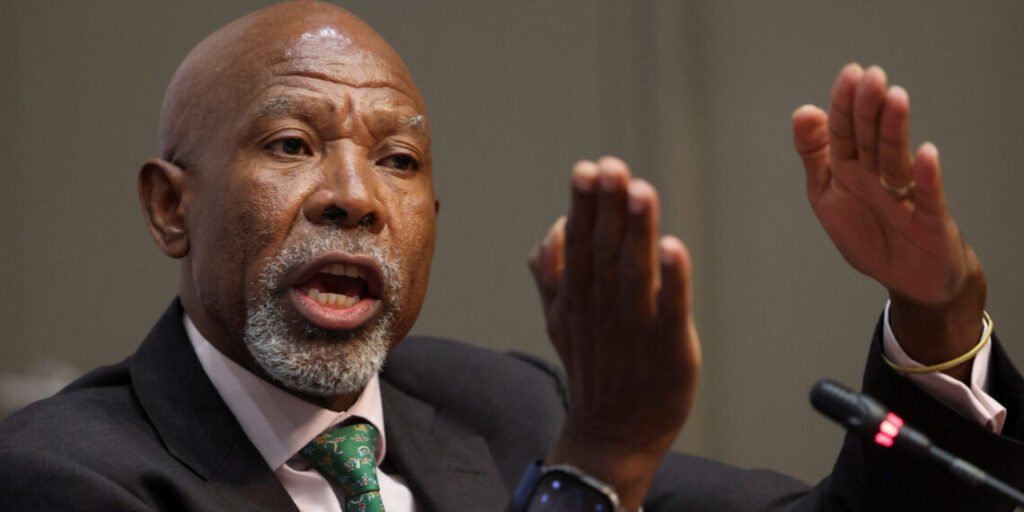1. Introduction: SARB repo rate 2025
On July 31, 2025, the South African Reserve Bank (SARB)’s Monetary Policy Committee unanimously voted to cut the repo rate by 25 basis points—adjusting the SARB repo rate 2025 from 7.25% to 7.00%, effective August 1, 2025. With inflation hovering at 3.0% in June, comfortably within the SARB’s 3%–6% range, this move sets the stage for a gentler borrowing environment—and real relief for consumers and businesses across South Africa.
2. SARB Cuts Repo Rate to 7.00% in July 2025
- The repo rate now stands at 7.00%, down from 7.25% in May
- This brings the typical prime lending rate at commercial banks to roughly 10.50%.
- Governor Lesetja Kganyago shared the unanimous decision and announced that the SARB would now target the lower end of its inflation range, effectively anchoring inflation near 3%.
3. Why Did SARB Cut Rates Again?
- In June, headline inflation rose slightly to 3.0%, up from May’s 2.8%—still low enough to justify monetary easing.
- Recognizing weaknesses in logistics, trade headwinds, and slow GDP growth (recently revised to around 1.2%) the SARB signalled a more dovish stance.
- The SARB also formally expressed a preference for fixing inflation at 3%, rather than the midpoint of 4.5% in its broad band—a move intended to support longer‑term economic stability.
4. What This Rate Cut Means for Your Money
a. Homeowners and Mortgage Holders on the SARB repo rate 2025 Cut
The reduction in the repo rate translates to lower monthly bond repayments. On a R2 million mortgage, you could save just under R340/month, depending on loan terms (property24.com). It may be a good time to consider refinancing, consolidating debt, or locking in fixed rates while borrowing costs are more favourable. To fully take advantage of the savings, it’s essential to plan your monthly expenses wisely—this budget calculator can help you map out how lower repayments can free up cash flow for other financial goals.
b. Car and Personal Loans
- With commercial banks reducing prime rates to around 10.50%, consumers refinancing or applying for new loans may benefit. Lower interest rates improve affordability for durable goods and short-term credit.
c. Savings and Fixed Deposits
- For savers, the repo rate cut means lower returns on deposit accounts and short‑term fixed income products. It’s a trade-off: cheaper borrowing for most, but somewhat diminished returns for risk‑averse savers.
5. Wider Economic Impact
- The property market is expected to receive a boost, especially in the affordable and mid‑market segments, as monthly repayments become more manageable.
- Consumer spending may pick up with a slightly softer credit environment. Analysts also expect business credit costs to ease, improving access to funding.
- Additionally, bond yields have dropped—most notably the 2035 benchmark yield fell to 9.62%, the lowest in five years—suggesting lower government borrowing costs.
6. What the Experts Say About SARB repo rate 2025 cut
- Property professionals like those from Rawson, Re/Max, and Lew Geffen Sotheby’s welcomed the cut as much‑needed relief but urged caution—recommending conservative budgeting and avoiding overstretching household finances.
- Some economists argue that further cuts may be limited in 2025, citing rising food inflation and weaker GDP momentum as constraints on SARB’s policy leeway.
- According to S&P Global Ratings, faster economic growth and fiscal consolidation are required to secure a credit rating upgrade. A lower inflation target also creates room for stable financing conditions over time.
7. Looking Ahead: Will Rates Go Lower?
While markets priced in expectations of another cut earlier, the July announcement may represent the last cut in 2025—especially if inflation edges above 3% or external shocks emerge.
Finance Minister Enoch Godongwana issued a reminder that any formal change to the inflation target must pass through proper consultation processes involving Treasury, Cabinet, and other stakeholders.
From a consumer standpoint, the key signals are to manage debt, consider refinancing where possible, but be mindful of rising food and utility costs that may pressure household budgets.
8. Conclusion on SARB repo rate 2025
The SARB repo rate cut to 7.00% effective August 1, 2025 provides tangible relief for borrowers—from mortgages to consumer loans. While it may lead to lower returns for savers, the benefits for households facing high cost-of-living pressures are clear. Government borrowing costs have also declined, and property market sentiment is cautiously upbeat.
However, with inflation risks, global uncertainty, and policy limitations, further interest rate cuts are not guaranteed. For South Africans, the key is to act strategically: lock in favourable rates, control spending, and watch for any signs of inflation volatility or macroeconomic shifts.
references
https://www.reuters.com/world/africa/south-africas-central-bank-cuts-key-rate-will-aim-bottom-target-band-2025-07-31/
https://www.property24.com/articles/what-the-rate-drop-means-for-buyers-sellers-and-homeowners/32698/
https://www.resbank.co.za/en/home/publications/publication-detail-pages/statements/monetary-policy-statements/2025/


